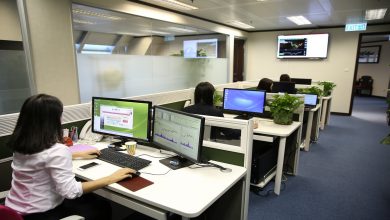
Throughout the COVID-19 period, the online learning space has evolved to meet the needs of various audiences. The pandemic has aided in the growth and legitimacy of the digital platform as a credible means of delivering educational content. Graduates of online courses will lose their cynicism. Social care innovations and other solutions curated to maximize engagement in otherwise inattentive demographics such as K-12 students have emerged.
Understanding kindergarten and K-12 teachers’ approaches to maintaining academic professionalism when the ability to effectively supervise their students is lacking is strategic.
Productivity Decline Caused by Low Morale
While solutions to facilitate distance learning, such as Google Classrooms, predate the pandemic, most schools have resorted to the popular Zoom platform. Their choice of medium was influenced by popularity rather than effectiveness. Teachers’ morale has suffered as a result of job insecurity, causing their productivity to fall, with students reciprocating their enthusiasm.
Teachers have had to deal with a number of constraints that do not exist in a classroom setting. Students can blame poor connectivity for their lack of participation. Because the students share the few computers in the house, scheduling lessons at the same time meant that some siblings would be left out. Given their constant mobility, parents and siblings frequently serve as distractions during classroom sessions. This movement is unavoidable for students who live in smaller apartments.
Acclimatization to Digital Learning
Developing long-term systems to ensure students met learning objectives proved difficult. Teachers worked with the bare minimum of goals that could be met. The lack of accountability measures muddled the teaching experience’s shallowness. Rather than assessing comprehension, efforts were redirected toward assessing attendance via random roll calls. Some educators have adapted to the new reality by utilizing the flipped classroom model.
The approach entails assigning students assignments on the upcoming topic, with live classroom sessions used to clarify misconceptions and provide contextual data that is missing from the sources. Nonetheless, many students appear to be struggling with a new ordeal. The workload may be overwhelming at any time, but it becomes even more so if you are not comfortable with online learning and prefer class-based learning.
When writing papers based solely on what you’ve learned online becomes too difficult, it’s time to turn to online writing services like SmartWritingService. Feel free to ask for essay assistance, as this service employs dependable experts who are ready to assist students with homework assignments in over sixty disciplines. This service is an excellent choice due to its professional approach to each order and strict adherence to deadlines.
Online Learning Space’s Difficulties
So far, teachers have attempted to replicate a traditional classroom in the online environment. Their teaching methods are more akin to emergency remote teaching than to online learning. The unpredictability of the coronavirus can be blamed in part for the lack of a formidable approach to online learning. Teachers’ attention is still divided because there have been conflicting announcements about schools reopening soon. However, the discovery of a new coronavirus strain has caused them to realize that the timeline for reopening may be extended.
The increased use of e-learning technologies bodes well for the future. Access to project management apps and virtual environments has not aided K-12 students, as they are unable to fully utilize the platform. The mass migration of students online, on the other hand, has legitimized the online certification courses that preceded them and drawn developers to the space. During this time, teachers should use strategies such as helping students improve their online navigation skills. Recognizing which information is relevant in a sea of data is a skill that these students would have benefited from even in their respective careers.
Although prior to the coronavirus outbreak, online certifications grew organically as connectivity increased, the outbreak’s unique variables left the digital sphere as the only option for replicating a semblance of normalcy. People rewired their lifestyles to adjust to the new reality, and the newfound awareness of these platforms will persist even after COVID. Recognizing that connectivity is not always perfect, even in the United States, and that some students are excluded from digital lessons is critical.


